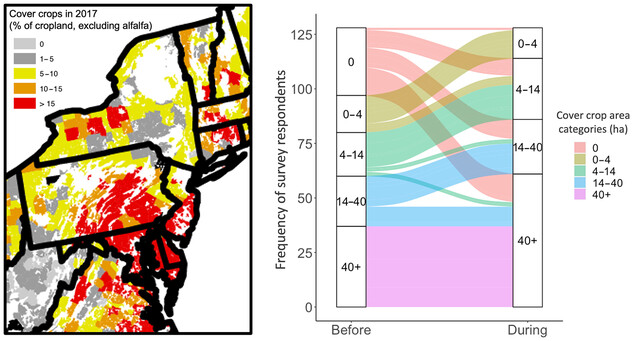August 11, 2023 | Agricultural & Environmental Letters |
Introduction: Under cover crop incentive programs, farmers across Maryland, Pennsylvania, New York, and Vermont are increasingly turning to cover crops as a means to enhance soil health and provide additional ecosystem benefits. A study by researchers from Cornell University in the USA surveyed 328 participating farmers to understand their characteristics and evaluate the impact of these programs on cover crop adoption.
Key findings: On average, results demonstrated that incentive programs led to a significant increase in the adoption of cover crops. The average cropland area planted with cover crops doubled from 50.7 hectares before program participation to 101.0 hectares during participation. Even among farmers who had concluded their program involvement, cover crop use remained, on average, 37.2% higher than before program enrollment.
Conclusion: These findings underscore the pivotal role of incentive programs in encouraging cover crop adoption and suggest insights for broadening participation among diverse farmers and enhancing the overall impact of such initiatives.

Fig. | Cover crop adoption as a share of harvested acreage, 2017. Maryland, Pennsylvania, New York, and Vermont were among the states with the greatest adoption of cover crops expressed as a percentage of cropland (excluding alfalfa) in 2017.





